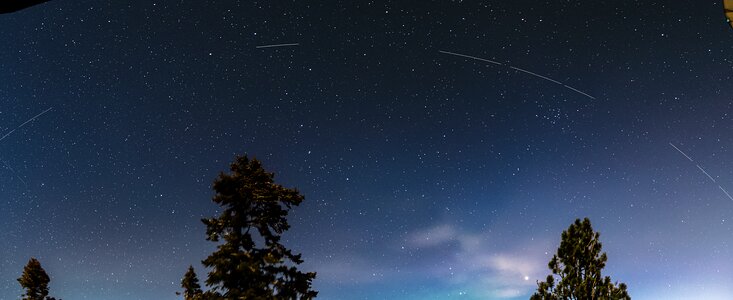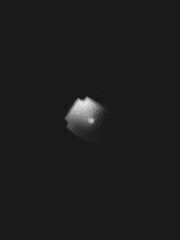- News
- Science
- Scientific Bodies
- Divisions
- Commissions
- Commission A1 Structure
- Commission A2 Structure
- Commission A3 Structure
- Commission A4 Structure
- Commission B1 Structure
- Commission B2 Structure
- Commission B3 Structure
- Commission B4 Structure
- Commission B5 Structure
- Commission B6 Structure
- Commission B7 Structure
- Commission C1 Structure
- Commission C2 Structure
- Commission C3 Structure
- Commission C4 Structure
- Commission D1 Structure
- Commission E1 Structure
- Commission E2 Structure
- Commission E3 Structure
- Commission E4 Structure
- Commission F1 Structure
- Commission F2 Structure
- Commission F3 Structure
- Commission F4 Structure
- Commission G1 Structure
- Commission G2 Structure
- Commission G3 Structure
- Commission G4 Structure
- Commission G5 Structure
- Commission H1 Structure
- Commission H2 Structure
- Commission H3 Structure
- Commission H4 Structure
- Commission J1 Structure
- Commission J2 Structure
- Commission J3 Structure
- Commission X1 Structure
- Commission X2 Structure
- Past Commission Organising Committees
- Working Groups
- Centres
- Scientific Meetings
- Rules & Guidelines
- General Assemblies
- Meeting Proposals
- Future IAU Meetings
- General Assemblies
- EC Meetings
- Officers' Meetings
- Regional Meetings
- Symposia
- Focus Meetings
- Institutional Meetings
- IAU Offices Meetings
- IAU-Sponsored Meetings
- Letters of Intent submitted for 2024
- Letters of Intent submitted for 2023
- Letters of Intent submitted for 2022
- Letters of Intent submitted for 2021
- Letters of Intent submitted for 2020
- Past IAU Meetings
- Templates
- Other Meetings
- Grants & Prizes
- Scientific Bodies
- Publications
- IAU Publications
- IAU Strategic Plan
- Symposia
- WGSBN Bulletins
- Regional Meetings
- Information Bulletins/Catalyst
- E-Newsletters
- Focus Meetings
- Transactions A
- Transactions B
- Related Publications
- GA Newspapers
- CAPjournal
- IAU Books
- Brochures
- IAU Offices
- WG Reports
- Commission Reports
- Division Reports
- Past IAU Publications
- Rules, Guidelines and Instructions for Proceedings
- Publishers
- IAU Publications
- Administration
- About the IAU
- Statutes & Rules
- IAU Policies
- IAU Executive Bodies
- IAU Secretariat
- Resolutions
- Members Administration
- Administrative Dates & Deadlines
- International Organisations Relations
- Donate to the IAU
- Training in Astronomy
- Astronomy for Education
- Astronomy for Development
- Astronomy for the Public
- Office for Astronomy Outreach
- FAQ
- Themes
- Satellite Constellations
- Astronomy in Everyday Life
- How to Report a Discovery
- Careers in Astronomy
- Defining our Place in the Cosmos
- The Constellations
- Light Pollution
- Measuring the Universe
- Near Earth Objects
- How to Participate in Astronomy Research
- Naming of Astronomical Objects
- Naming of Exoplanets
- Buying Star Names
- Naming Stars
- Pluto and the Solar System
- IAU Member Statistics
- Our Moon: the Moon
- Meteors & Meteorites: The IAU Definitions of Meteor Terms
- UNESCO-IAU Portal to the Heritage of Astronomy
- Social Media
- Past Events
- Call for Online Resources
- Astronomy@Home Awards
- Contact
ann23034 — Announcement

2 October 2023
Further Understanding BlueWalker 3’s Impact on Astronomy
New Nature paper contains the results of international observing campaign conducted over 130 days
Scientists, including astronomers from the International Astronomical Union Centre for the Protection of the Dark and Quiet Sky from Satellite Constellation Interference (IAU CPS), have published a paper in Nature assessing the detailed impact of the BlueWalker 3 satellite on astronomy. Building on initial observations from shortly after its launch, these new results complement the initial understanding of this unusual satellite and the paper contains details of how the satellite’s brightness changes over time and the visibility of jettisoned hardware. With companies intending to deploy more commercial satellites in the coming years, this paper highlights the need for pre-launch impact assessments.
“The interference of satellites in astronomy has become an increasingly pressing issue over the last few years,” commented first author Sangeetha Nandakumar from the Instituto de Astronomía y Ciencias Planetarias, Universidad de Atacama Chile.
BlueWalker 3 was launched into low Earth orbit on 10 September 2022 by AST SpaceMobile as a prototype for a planned constellation of over a hundred similar satellites intended for use in mobile communications. Observations made shortly after launch showed that the satellite was among the brightest objects in the sky. However, to better understand its impact on astronomy, the CPS, which is co-hosted by NSF’s NOIRLab and the SKAO, initiated an international observing campaign. As part of this initiative, both professional and amateur observations were contributed from across the world from sites in Chile, the US, Mexico, Aotearoa New Zealand, the Netherlands, and Morocco.
The newly released data show an abrupt increase in the brightness of BlueWalker 3 over a period of 130 days, coinciding with the complete unfolding of the antenna array and followed by fluctuations over the subsequent weeks [1]. The paper also reveals a relationship between the varying brightness and other factors after unfolding, such as the satellite’s height above the horizon and the angle between the observer, the satellite and the Sun. A subset of the observations were also used to calculate the satellite’s trajectory over time. Comparing the predicted path with the observations collected, the authors were able to evaluate the accuracy of these predictions and observe how it declines over time as a result of factors such as atmospheric drag.
Additionally, the launch vehicle adapter attached to BlueWalker 3 was observed decoupling from the satellite. This component reached magnitude 5.5, exceeding maximum brightness recommendations set out by the International Astronomical Union to avoid the worst impacts of satellites on optical astronomy. It also went unrecorded in public catalogs for four days. Since items of hardware like this are often left to drift for extended periods, incomplete data on their orbits present further challenges for ground-based observatories trying to avoid them.
“These results demonstrate a continuing trend towards larger, brighter commercial satellites, which is of particular concern given the plans to launch many more in the coming years,” says the study’s co-author Siegfried Eggl from the CPS and the Department of Aerospace Engineering at the University of Illinois at Urbana-Champaign (UIUC). “While these satellites can play a role in improving communications, it is imperative that their disruptions of scientific observations are minimized. This could preferably be achieved through continuing cooperation on mitigation efforts, or, if that is not successful, through a requirement for pre-launch impact assessments as part of future launching authorization processes.”
“Besides the effect on visible observations, BlueWalker 3 could also interfere with radio astronomy, since it transmits in radio frequencies close to those that radio telescopes observe in,” says Federico Di Vruno, co-director of the IAU CPS. “The novel aspect of BlueWalker 3 is that it uses frequencies that are normally used by terrestrial transmitters,” he adds. While some telescopes are located within designated radio-quiet zones, the restrictions in place to preserve these areas currently apply only to terrestrial transmitters, so they are not necessarily protected from satellite transmission. Further research is therefore required to develop strategies for protecting existing and future telescopes from the numerous satellites planned for launch over the next decade.
“The astronomical community understands the need for greater connectivity and improvements to Internet access, particularly for rural and underserved communities. However, that progress has to be balanced against the negative impact that bright satellites can have on the night sky. This is a global issue, since satellites approved by any country are visible in the night sky across the world, highlighting the importance of international coordination,” says the study’s co-author Jeremy Tregloan-Reed from the Instituto de Astronomía y Ciencias Planetarias, Universidad de Atacama Chile, CLEOsat and the CPS.
Observations of BlueWalker 3 will continue, with plans by astronomers to observe its thermal emission later this year. Astronomers will continue to discuss this topic at the upcoming IAU Symposium: Astronomy and Satellite Constellations: Pathways Forward in October.
Notes
[1] The data show the changing brightness over a course of 130 days, from apparent magnitude 6 (prior to unfolding) to an apparent magnitude 0.4.
More information
The IAU is the international astronomical organization that brings together more than 12,000 active professional astronomers from more than 100 countries worldwide. Its mission is to promote and safeguard astronomy in all its aspects, including research, communication, education and development, through international cooperation. The IAU also serves as the internationally recognised authority for assigning designations to celestial bodies and the surface features on them. Founded in 1919, the IAU is the world's largest professional body for astronomers.
The International Astronomical Union’s Centre for the Protection of the Dark and Quiet Sky from Satellite Constellation Interference (IAU CPS) is a global organization co-hosted by the US-based NSF’s NOIRLab and the SKA Observatory (SKAO), under the auspices of the IAU. The CPS facilitates global coordination of efforts by the astronomical community in concert with observatories, space agencies, industry, regulators and other sectors to help mitigate the negative consequences of satellite constellations on astronomy.
NSF’s NOIRLab (National Optical-Infrared Astronomy Research Laboratory), the US center for ground-based optical-infrared astronomy, operates the International Gemini Observatory (a facility of NSF, NRC–Canada, ANID–Chile, MCTIC–Brazil, MINCyT–Argentina, and KASI–Republic of Korea), Kitt Peak National Observatory (KPNO), Cerro Tololo Inter-American Observatory (CTIO), the Community Science and Data Center (CSDC), and Vera C. Rubin Observatory (operated in cooperation with the Department of Energy’s SLAC National Accelerator Laboratory). It is managed by the Association of Universities for Research in Astronomy (AURA) under a cooperative agreement with NSF and is headquartered in Tucson, Arizona. The astronomical community is honored to have the opportunity to conduct astronomical research on Iolkam Du’ag (Kitt Peak) in Arizona, on Maunakea in Hawai‘i, and on Cerro Tololo and Cerro Pachón in Chile. We recognize and acknowledge the very significant cultural role and reverence that these sites have to the Tohono O’odham Nation, to the Native Hawaiian community, and to the local communities in Chile, respectively.
The SKAO, formally known as the SKA Observatory, is an inter-governmental organisation composed of Member States from five continents. Its mission is to build and operate cutting-edge radio telescopes to transform our understanding of the Universe, and deliver benefits to society through global collaboration and innovation. Headquartered in the UK, its two telescope arrays will be constructed in Australia and South Africa and be the two most advanced radio telescope networks on Earth. Through the development of innovative technologies and its contribution to addressing societal challenges, the SKAO will play its part to address the United Nations’ Sustainable Development Goals and deliver significant benefits across its membership and beyond. The SKAO recognises and acknowledges the Indigenous peoples and cultures that have traditionally lived on the lands on which the SKAO facilities are located.
Links
- Research paper: Optical observations find high brightness of the BlueWalker 3 satellite
- Previous press release about Bluewalker 3
- CPS announcement
- NOIRLab announcement
- Imperial College London announcement
- Universidad de Atacama Instituto de Astronomía y Ciencias Planetarias
- Oukaimeden Observatory
Contacts
Sangeetha Nandakumar
Universitätsklinikum Bonn, UKB
Phone: +49 176 26541149
Email: an.sangeetha@gmail.com
Siegfried Eggl
University of Illinois at Urbana Champaign / IAU CPS
Phone: +1 217 333 2651
Email: eggl@illinois.edu
Jeremy Tregloan-Reed
Instituto de Astronomía y Ciencias Planetarias, Universidad de Atacama / Director of CLEOsat / IAU CPS
Phone: +56 9 3093 0495 / +44 (0) 7554 154707
Email: jeremy.tregloan-reed@uda.cl
Federico Di Vruno
IAU CPS Co-Director
Phone: +44 7384 511248
Email: federico.divruno@skao.int
Lars Lindberg Christensen
IAU Director of Communications/NOIRLab Head of Communications, Education & Engagement
Cell: +1 520 461 0433/+49 173 38 72 621
Email: lars.christensen@noirlab.edu
Mathieu Isidro
IAU CPS Communications and Outreach Lead
Phone: +44 7824 016 126
Email: mathieu.isidro@skao.int
Josie Fenske
NSF's NOIRLab Communications
Email: josie.fenske@noirlab.edu

